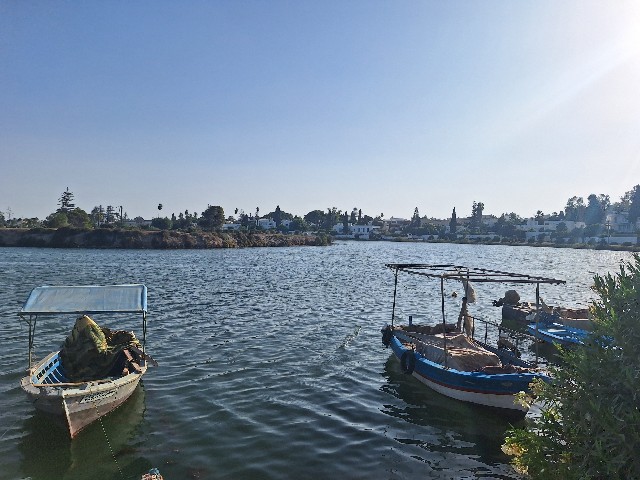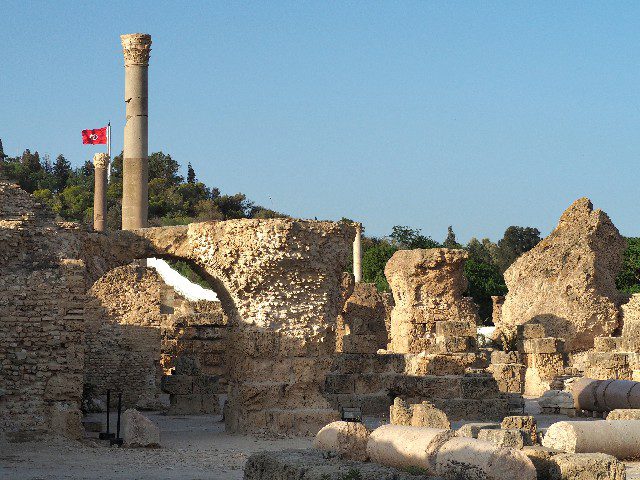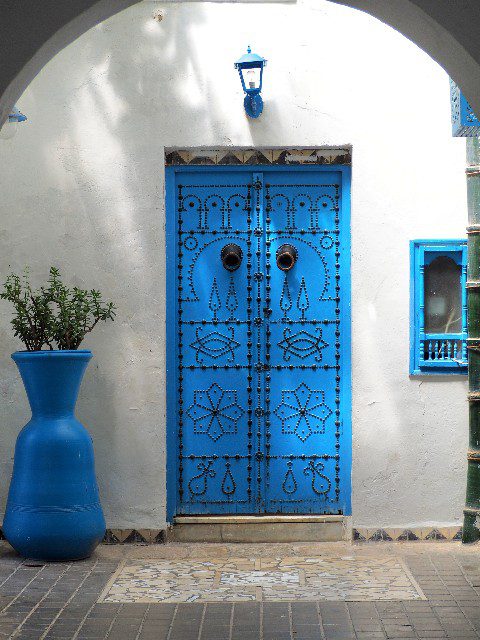
The symbol of ancient Carthage, the circular military harbor
https://www.romanports.org/
The circular military harbor of Carthage. Many people may recognize its distinctive donut-shaped form from world history textbooks. This shape is etched in historical memory as a symbol of the Carthaginian Empire that once dominated the Mediterranean. Even those not well-versed in history might find this harbor’s shape impressively memorable.
Having heard that this ancient Carthaginian military harbor still retains its outline and quietly exists in the suburbs of Tunis, I decided to visit the site.
Moments Before Departure and Scenery Along the Way

Surprisingly, third-wave coffee shops line the area around Carthage Hannibal Station
Before walking from Carthage Hannibal Station to the harbor, I first paused at a stylish café near the station. In this modern, sophisticated interior café, contemporary coffee culture quietly thrives. Surrounded by rich aromas, I felt my heart racing with anticipation as I savored an iced coffee while imagining the history of the harbor I was about to visit.

After refreshing with coffee, I started walking toward the harbor. Though it’s only about a seven-minute walk from the station, several unnamed ancient Carthaginian ruins are scattered along the way. Weathered stoneworks and broken columns remain here and there by the roadside, subtly blending into the modern cityscape. There’s a unique atmosphere in this region where history exists as part of the everyday landscape.
Harbor in Silence

Though difficult to convey in a ground-level photo, the donut shape outline is still intact today.
Upon arrival, I was first struck by the silence. This place, which once would have been crowded with soldiers and ships as a military base, now stands as a peaceful fishing port. Under the crystal-clear blue sky, waves gently caress the harbor, with only a few blue boats swaying in the water. There are also some anglers sitting and leisurely enjoying fishing. Time flows slowly here, as if sealing away the bustling past.

It has now completely transformed into a fishing spot where locals relax.
Looking at this peaceful scene, I cannot help but imagine how magnificent the military harbor once was. The battles prepared for here, the life-risking voyages, and the ambitious Carthaginian soldiers seem to remain like shadows in this silence.

Several small boats are moored along the shore.
Carthage’s Outline Preserved Through Time

In place of the former headquarters, a small marine biology museum now sits in the central part of the donut.
Today, this place is known as “Carthage Punic Ports.” However, compared to other tourist sites such as the Baths of Antoninus or the Carthage Theater, very little has been developed, and most of the ruins have disappeared. Nevertheless, the donut-shaped outline remains intact, quietly continuing to tell the story of ancient glory.

Greenery flourishes around the harbor, making it difficult to imagine the remains of the once-hidden docks. Still, standing here now, one is overwhelmed by a sensation of historical echoes whispering across time. The contrast with the surrounding residential area seems to further enhance its otherworldly atmosphere. Glimpsing Carthage’s former glory in this place where everyday life and history intersect is truly a journey across space and time.

The fact that this circular military harbor is depicted on Tunisia’s 2 dinar coin is evidence that this place holds special meaning for local people. Though few tourists visit, the harbor remains an important symbol representing Tunisia’s history and identity. It’s a quiet place, yet one that conveys the depth of history behind it.
Carthage’s Sea Extending to the Mediterranean

Walking northward, I was surprised by the blue sea and the abundance of cats
Moving a little north from the harbor, the azure Mediterranean Sea stretches before you. The endless horizon merges with the blue sky, and I feel a surge of emotion thinking that Carthage’s fleet once departed from this place to dominate these waters. Looking at this peaceful sea, I can visualize the ships of the former Carthaginian Empire setting sail from here into the wider world, pioneering new trade routes or challenging enemies in battle.

The waves are high in this Mediterranean-facing sea area. Yet seeing locals swimming energetically, I sense the DNA of the once-formidable Carthaginian army.
Standing before the vast Mediterranean, ambitions, hopes, and memories of battles from long ago wash in with the waves. Today, this place is a peaceful beach where local Tunisians enjoy swimming, but history breathes quietly behind it. In the 21st century, the centers of commerce and politics have moved to Tunis, but Carthage’s sea continues to fill Tunisian hearts and evoke memories of ancient glory.
Conclusion
Carthage’s circular military harbor maintains its outline as a symbol of history across time. While it now serves as a quiet fishing port, its donut shape still breathes with the grand history of the past. If you have the opportunity to visit this place, I hope you’ll touch the ancient ruins and imagine the fleets that once departed from this harbor to the vast Mediterranean. You will surely feel that this place is still a living heritage connecting history with the present.





